On protecting prime fishing spots, a balancing act
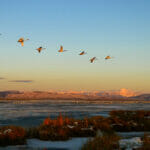
The Catch 22 of conservation: Can we love sensitive places to death?

The Catch 22 of conservation: Can we love sensitive places to death?

Our membership has grown and diversified to include a host of different businesses, including financial institutions.
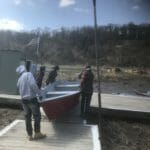
By Chris Wood The other morning, my friend, Brent Fewell, an attorney who worked at the EPA under President George W. Bush, wrote: “Had dinner and a very encouraging conversation last evening with seven prominent GOP Senators who want to make the environment and conservation a greater priority for the GOP, a return to Teddy…
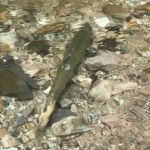
About 800 miles from the ocean, high on the western slope of Lolo Pass, king salmon cling to life. By Warren Colyer You never know quite what to expect at a project site. And that’s one of the things I love most about my job. Granted, I don’t get too many field days anymore. It…
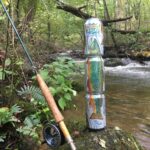
By Mark Taylor Who isn’t drawn to beer featuring really great trout artwork on cans and packaging? And how great is it when that beer is not only super tasty, but also benefits wild trout? SweetWater Brewery’s new fall seasonal, Mosaic Hazy IPA, checks all the boxes. It’s a juicy, fruity, moderately hoppy (65 IBUs)…
Chapters or councils should use great caution if they choose to grant scholarships to individuals. While 501(c)(3) organizations (TU, its chapters and councils) are permitted by the IRS to grant scholarships that further the charitable purpose of the organization, the IRS has strict and complex rules for governing the process of granting and reporting on…
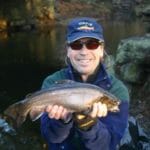
Salter brook trout are a unique species that once was the focus of some of our nation’s earliest trout fishing aficionados. But development pressures and habitat fragmentation caused by dams and culverts pose a risk to salter brook trout across the northeast. In the fall of 2015, survey crews failed to find a single brook…

On Friday, July 12, Rep. Debbie Dingell (D-MI) and Rep. Jeff Fortenberry (R-NE), along with 59 members of Congress introduced the bipartisan Recovering America’s Wildlife Act (RAWA). Click here to see a letter to Congress signed by TU and a broad coalition of conservation and sportsmen’s organizations in support of the bill. The Recovering America’s Wildlife Act…
[et_pb_section fb_built=”1″ admin_label=”section” _builder_version=”3.22″ fb_built=”1″ _i=”0″ _address=”0″][et_pb_row admin_label=”row” _builder_version=”3.25″ background_size=”initial” background_position=”top_left” background_repeat=”repeat” _i=”0″ _address=”0.0″][et_pb_column type=”4_4″ _builder_version=”3.25″ custom_padding=”|||” _i=”0″ _address=”0.0.0″ custom_padding__hover=”|||”][et_pb_text admin_label=”Text” _builder_version=”3.0.74″ background_size=”initial” background_position=”top_left” background_repeat=”repeat” _i=”0″ _address=”0.0.0.0″] [/et_pb_text][et_pb_text _builder_version=”3.27″ min_height=”438px” custom_padding=”||2px|||” _i=”1″ _address=”0.0.0.1″] This week, Colorado Gov. Jared Polis made protecting wildlife in the state a priority. Deer, elk, bears, mountain lions and even…
What a thrilling prospect to catch native fish in a spectacular wilderness setting like in the picture above. That is what anglers’ dreams are made of. Years of hard work, planning and enduring partnerships strove towards this goal, but it’s still not quite a realized dream. In 2005, Fred Bunch, chief of resource management at Great Sand Dunes National Park and Preserve, hatched a plan…
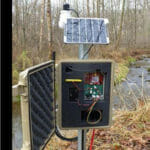
By Jake Lemon Scientists and anglers throughout the country rely on USGS gaging stations for real-time streamflow and water quality data. Often these stations are located near the mouth of larger rivers forcing data users to extrapolate to understand what is happing in smaller coldwater trout streams. Now, rapidly emerging technologies in open-source electronics are allowing volunteer groups to collect valuable real-time…
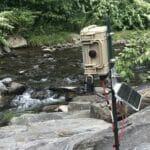
By Jake Lemon Perhaps no bug is more significant to anglers than the mayfly. We chase them, imitate them, even tattoo their visage on our skin. Now a new type of mayfly is emerging on rivers and streams in the US. The Mayfly Sensor Station is an autonomous, low-cost water monitoring station that uploads water quality and quantity…
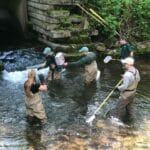
Trout Unlimited staff and Ashokan-Pepacton chapter members assisted NYS Department of Environmental Conservation in completing the East Branch Delaware River Trout Habitat Improvement Project (HIP). The project underway since 2016, was designed to better understand potential challenges facing trout in the watershed and to help develop mitigation and management strategies to reduce potential water quality and movement impacts caused by the Lake Wawaka dam in Halcottsville, NY. The project, spearheaded by concerned local…
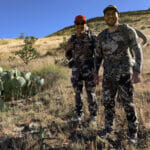
As a long-time resident of Las Cruces, a former city councilman and current U.S. Congressperson for New Mexico’s 2nd District, Gabe Vasquez has seen nothing but good come out of the creation of the Organ Mountains-Desert Peaks National Monument.
Fundraising Committee Duties All of the great conservation mission work your local chapter accomplishes requires resources to be successful. The Fundraising Committee is typically tasked with planning the major money-raising events, ranging from the traditional banquet and grant applications, to newer types of fundraisers, such as online auctions, crowd-funding, major donor friendraisers and more. Recruiting…
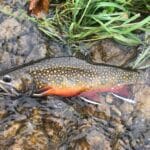
The Bois Brule River is among the best-known of Wisconsin’s trout streams. While the big river teems with big rainbow and brown trout, its tributaries are good trout waters in their own right.

Recent events have included tree plantings and tree giveaways in North Carolina and Tennessee
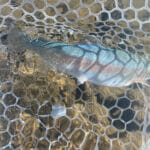
“Historically, for one reason or another, things have been relatively slow to move for the Eagle Lake rainbow trout and in Lassen County,” she explained. “But after a slow start, momentum is building, and funding is flowing for this species in the area.”
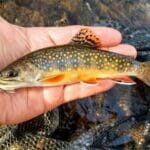
How groundwater may help Garden State trout weather climate change in streams like Lopatcong Creek.

Of the national forests where oil and gas development potential data exist, only 11 percent have high/medium energy potential